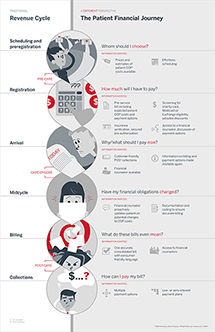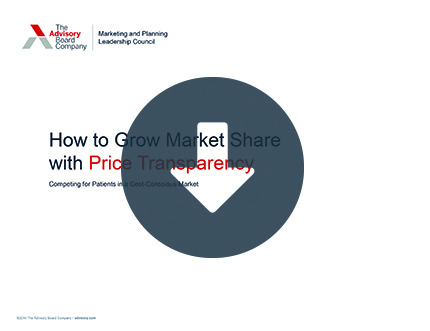Employer-sponsored private health plans in 2017 paid more than double the amount Medicare paid for identical health care services, according to a report from RAND released Thursday, Kaiser Health News (KHN) reports.
Today at 3 pm ET: Get a deep dive look at the entire FY 2020 proposed IPPS rule
The report is among the first to examine how much more private health plans pay for health care services than Medicare, according to KHN.
Report details
For the report, the researchers examined data from self-insured employers, state-based all-payer claims databases, and health plans to compare the amount Medicare and private insurers pay for health care services. The data, which spanned 2015 through 2017, included a total of $13 billion in spending among 1,598 hospitals in 25 states.
The researchers noted that the private plan reimbursements reflect "the negotiated allowed amount paid per service, including amounts from both the health plan and the patient, with adjustments for the intensity of services provided." The researchers determined relative prices by comparing the private insurance companies' negotiated prices to Medicare reimbursements for the same services at the same facilities.
Findings
The researchers found the gap between the prices Medicare and private insurers pay hospitals increased from 2015 to 2017. Specifically, the researchers found private insurers in 2015 on average paid 236% of Medicare rates, and by 2017 that grew to 241% of Medicare rates.
The researchers estimated that if private insurers in the data examined had reimbursed at Medicare rates between 2015 and 2017, their payments would have been $7.7 billion during that time period.
The researchers found the gap in reimbursements was higher for outpatient services than inpatient care. In particular, the researchers found the average prices private insurers paid for hospital outpatient services were 293% of Medicare rates, while inpatient services were reimbursed at 204% of Medicare rates.
However, the researchers found the gap between relative outpatient and inpatient payments varied by state. Private insurers in eight states—Michigan, New York, Tennessee, Massachusetts, Louisiana, New Hampshire, Montana, and Maine—had nearly equal relative prices for inpatient and outpatient care.
The researchers also found wide variation among the prices hospitals were paid by private insurers. According to the report, hospital prices ranged from 150% of Medicare rates to more than 400% of Medicare rates.
The researchers also found an association between price and quality. For example, the researchers found 21% of the hospitals with higher private-payer prices received five stars from CMS' Hospital Compare and only 1% received one star. In contrast, the researchers found 9% of hospitals with lower private-payer prices received five stars and 11% received one star.
Comments
Chapin White, an adjunct senior policy researcher at RAND, said that based on the report, "[i]t doesn't seem to be the case that there's no relationship at all between prices and quality," but he noted a number of factors could be having an influence on quality. White said, "It may … be the case that if hospitals are bringing in really healthy revenues from the commercial sector, then they enable them able to do things that bump up their Hospital Compare quality metrics."
Christopher Whaley, one of the study's authors, said, "If you ask hospitals, they will pretty commonly say that 'our prices are high because we lose money on Medicaid patients and barely break even on Medicare.' But if you kind of look at the data, that story doesn't hold up that well empirically. Sometimes hospitals that can charge higher prices because of market clout, reputation or must-have status do so."
However, American Hospital Association (AHA) in a statement noted some of the study's limitations, including "its small sample size." AHA noted that the data examined represent "less than 5% of all covered persons in about half of all states, and just 2% of the 181 million Americans with employer-sponsored insurance nationally." In addition, AHA argued "Medicare payment rates, which reimburse below the cost of care, should not be held as a standard benchmark for hospital prices" (Livingston, Modern Healthcare, 5/9; Japsen, Forbes, 5/9; Luthra, Kaiser Health News, 5/9; Owens, "Vitals," Axios, 5/10; Abelson, New York Times, 5/9; RAND report, 5/9; RAND release, 5/9; AHA statement, 5/9).
Today at 3 pm ET: Get a deep dive look at the entire FY 2020 proposed IPPS rule
We'll examine the details of the FY 2020 Inpatient Prospective Payment System (IPPS) Proposed Rule, including proposed changes to rates, MS-DRG groupings, and inpatient quality initiatives.
Don't miss out on the latest Advisory Board insights
Create your free account to access 2 resources each month, including the latest research and webinars.
Want access without creating an account?
You have 2 free members-only resources remaining this month remaining this month.
1 free members-only resources remaining this month
1 free members-only resources remaining this month
You've reached your limit of free monthly insights
Become a member to access all of Advisory Board's resources, events, and experts
Never miss out on the latest innovative health care content tailored to you.
Benefits include:
You've reached your limit of free monthly insights



